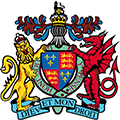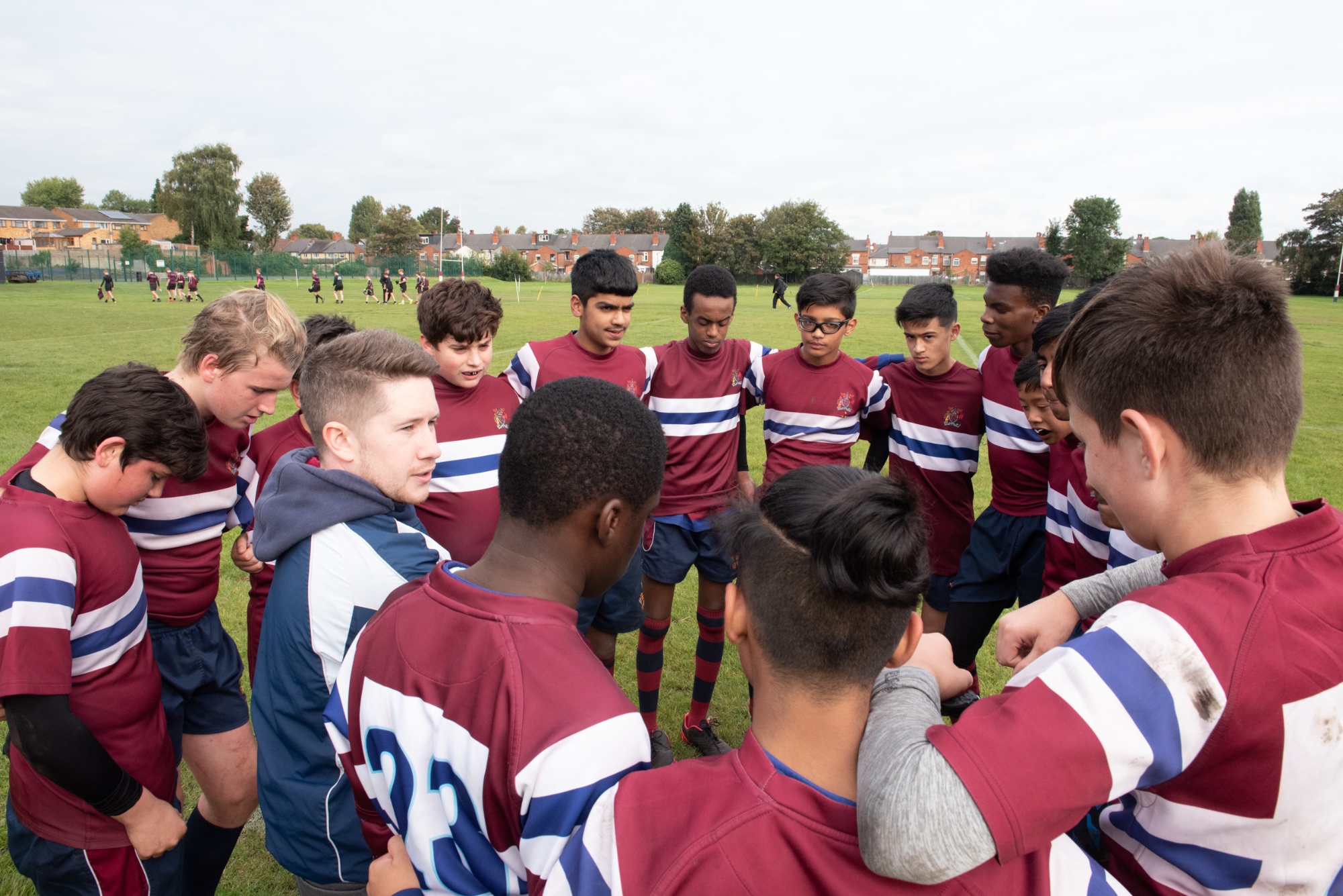Uniform
Introduction
The school's Governors believe that a school uniform for pupils in Years 7 - 11 and a dress code for students in the Sixth Form are both desirable and appropriate, and help to promote a good working environment. Separate requirements for PE and practical subjects also make up the school’s uniform policy. The uniform items fulfil the criteria of clothing that is suitable, comfortable, affordable and practical.
Students are expected to wear their uniform when travelling to and from school and at all times during the school day. Whenever the school uniform is worn it must be complete and not mixed with non-uniform clothing. This includes when travelling to and from school.
The Headmaster may grant exceptions to any part of the school’s uniform policy but in most instances this will relate to cases of sincere religious observance and where this can be substantiated by a letter from the national body/leadership of the relevant religious community. The Headmaster is the final arbiter in all matters relating to uniform and appearance.
Aims
Through the uniform the school aims to:
- Encourage pride in the school.
- Support teaching and learning.
- Enable pupils to be comfortable, safe and secure.
- Encourage a sense of equality and belonging to the school community.
- Protect pupils from social pressures to dress in a particular way.
- Support parents by providing a 'value for money' uniform.
- Ensure the integration of pupils from different social, religious and ethnic groups.
Uniform for pupils inYears 7 - 11
Required uniform items
- Blazer - black (unbranded) with a school badge (branded)
- Trousers-polyester/wool, plain, charcoal grey or black (not very narrow or wide styles) (unbranded)
- Shirt: white or light blue, short or long sleeved with a regular collar (unbranded)
- Shoes: black, polished (not suede or boots or training shoe style)
- House tie (branded)
- Socks: black (unbranded)
All uniform items above are required throughout the school year.
Optional uniform items
- Pullover - grey, blue or black single colour V-neck or a King Edward VI Aston sweater in blue or maroon.
- Coats or anoraks predominantly of discreet colours.
Blazer sleeves must be worn rolled down, shirts tucked in, top button done up and ties appropriately knotted and tied.
Winter games kit
- School rugby jersey, socks, dark blue shorts and rugby/football boots. Students may also wear a school sweat top, training top and house polo shirt.
- Mouth guards are essential and must be worn for training and matches for all contact sports, especially hockey and rugby.
Summer PE and games kit
- T-shirt in house colours, white shorts, white socks and predominantly white training shoes. Cricket whites may be worn for cricket lessons.
Art and Design Technology
- An apron is required for all lessons in art, photography, design and technology and food technology.
Exceptions
- Students who wish to play on the courts before and after school and during recess and lunch are strongly encouraged to change into a pair of training shoes to avoid damage to their school shoes. Students must change back into their school shoes for the start of lessons or before leaving the school site.
- During hot weather, 'shirt-sleeve order' may be introduced. The length and timing will be determined by the Headmaster with parents informed if it extends beyond one day. During periods of shirt sleeve order students will not be required to wear their blazer or a tie at any time during the school day and can have the top button of their shirt undone. All other uniform rules will still apply including the requirement for shirts to be tucked in.
Stationery
Students should have the following items (as a minimum) in their pencil case for every lesson:
- Pen (blue or black)
- Pencil
- Ruler
- Rubber
Mathematics stationery
Students should have the following items of equipment with them for every Mathematics lesson:
- Protractor
- Calculator (Casio fx 83GTX or fx 85GTX)
A compass will be needed to complete homework tasks, but should only be brought into school for formal examinations.
Uniform for students in Years 12 and 13
All students in Years 12 and 13 are expected to wear a jacket and trousers appropriate for an office environment (dark colours) and either a Sixth Form tie or a tie indicating a student leadership position (school captain, senior prefect, House captain) or the award of school colours. Shirts must not be of a loud colour (s).
Jumpers must be of a style which allow for the student’s tie to be seen. They should be grey or black in colour or a King Edward VI Aston sweater in blue or maroon. Sweat shirts and hoodies are not allowed.
Games and PE kit needs to be appropriate for the activity being undertaken, including appropriate footwear. Students do not have to wear the school kit as per Years 7-11. Mouth guards are essential and must be worn for training and matches for all contact sports, especially hockey and rugby.
Public examinations
School uniform rules and the sixth form dress code apply to all students sitting public examinations e.g. GCSE, A/S & A-Levels.
Uniform suppliers
Most of the school uniform can be obtained from general retailers. Those parts of the uniform specific to the school can be obtained from
In addition, the school will maintain a stock of school badges and all ties allowed to be worn by the students. The school will also maintain a stock of second-hand uniform which can be purchased via the pastoral hub in West Wing Basement.
Hats and head covering
During the school day and in lessons, hats must only be worn for reasons resulting from a medical condition e.g. alopecia.
Hats can be worn when the students are outside during occasions of shirt sleeve order. During occasions of shirt sleeve order, hats worn outside must be removed for lessons and when moving between lessons.
In all other instances head coverings can only be worn if they are a formal requirement of the religion observed by the student. Where worn head coverings must be dark blue, black or white, with no other colours permitted.
Jewellery
No earrings, studs or facial piercing jewellery may be worn.
A wristwatch may be worn and items of jewellery formally required by the religion observed by the student e.g. the kara bracelet worn by Sikhs. All jewellery must be worn discreetly and removed in those lessons where to wear it would pose a health and safety risk e.g. PE, games and design and technology.
Hair
No extremes of hair colour or style are allowed.
Hair must be clean and tidy with long hair tied back at all times during the school day.
Parents must ensure that their son avoids extreme styles. The school reserves the right to insist on restyling if it considers the style inappropriate. Shaved patterns in hair or eyebrows are not permitted.
Make-up
Make-up (nail varnish, foundation, mascara, eye-liner, glitter, lip gloss and lipstick) is not allowed to be worn.
Non-uniform days and events
If students are not expected to wear uniform because of a designated 'non-uniform day' or because they are being educated off-site their clothing must be appropriate for the working environment or activities that they will be undertaking during the day. The clothing worn must also allow the student to travel safely to and from school.
For educational visits the clothing worn by the student must reflect the advice offered by the leader of the activity.
T-shirts must not display extreme images, offensive views or comments.
Support for students from disadvantaged families
Pupils for whom the school receives pupil premium funding or who receive support from the Albion Trust can use their allocation to purchase school uniform, sports equipment, school shoes and a winter coat up to the stated cost limits.
Enforcement of the policy
It is the responsibility of the Headmaster and all staff to monitor and enforce the uniform policy as part of the day to day running of the school. Parents have the responsibility to ensure that their son has the correct uniform items and wears them to school. Form tutors must check that their students are in correct uniform at the start of the day
- In the first instance the form tutor should deal with any minor breach of the uniform policy. The student should be issued with a behaviour point.
- Subsequent breaches of the uniform policy should be referred to the appropriate year leader with the student placed in a pastoral detention.
- If correct uniform is repeatedly not worn the student’s parents must be contacted by the year leader.
- Further breaches of the school’s uniform policy must be referred by the year leader to the Deputy Headteacher. If they decide to send the student home they will only do so after having made contact with parents. If contact with parents is not possible the student may be put in internal exclusion for the day.
- In the case of jewellery and other accessories which infringe the uniform policy, a member of staff may ask the student to remove the item and keep it in their locker until the end of the day. If this is not possible the items must be brought to the main school office for storage in the school safe until the end of the school day when they can be collected.
Issues arising from the policy
Parents should raise any issues relating to school uniform, dress code or other aspects of appearance with the Headteacher. Requests to vary uniform requirements for specific reasons such as medical needs will always be carefully considered.
Pupils may raise issues about the school’s uniform policy or bring them to the attention of the Student Council.


